- cdg01@cdgfurniture.com
- MP & WeChat & WhatsApp: +86-13926103331 (Ms. Lisa Liang)
-
![]()
-
![]()
CONTACT US
SEND INQUIRY NOWBy: CDG
Date: 12/10/2024
Email: cdg01@cdgfurniture.com
Tel: +86-20-36933270 / 36933272 / 36933273 / 36853567
MP & WeChat & WhatsApp: +86-13926103331 (Ms.Lisa Liang)
Table of Contents
Introduction to Weaving Materials in Outdoor Furniture
Outdoor furniture bridges the comfort of indoor living with the beauty of nature, reflecting our desire for a better quality of life through thoughtful design and material choices. The three primary types of woven materials used in outdoor furniture today are natural materials, polymer materials, and synthetic fiber materials. Each type has its own set of advantages and challenges, making them popular choices in outdoor furniture design.
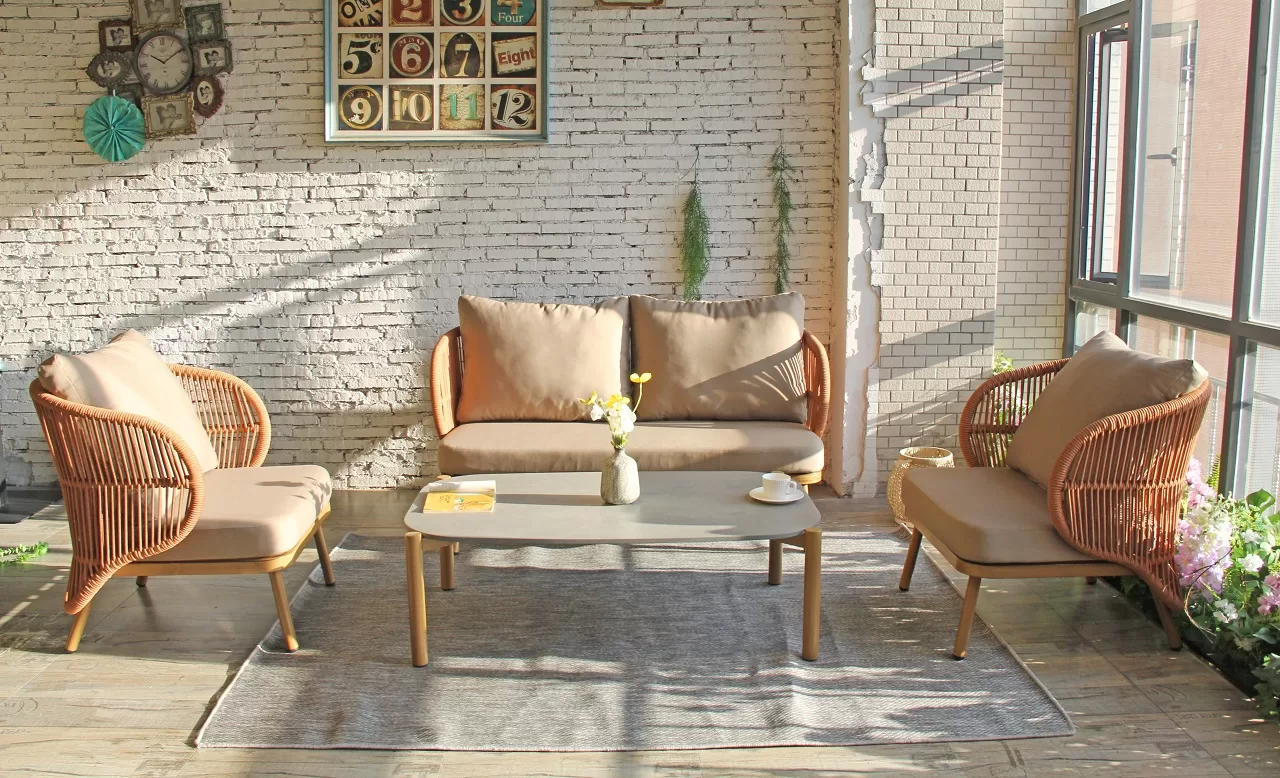
1. Natural Materials
Natural materials like rattan, wicker, and bamboo have been favored for weaving furniture since ancient times. They not only carry a rich cultural heritage but also showcase unparalleled natural beauty. Rattan, sourced from vine plants in tropical forests, is celebrated for its flexibility and strength. Skilled artisans can weave it into a variety of furniture styles, including rocking chairs, lounge chairs, and dining tables, each piece reflecting a rustic charm.
Wicker and bamboo, derived from temperate and subtropical regions, also possess excellent processing qualities, allowing for the creation of intricate outdoor furniture that adds a touch of nature to outdoor spaces. However, while beautiful, furniture made from natural materials faces challenges with durability and maintenance. Rattan and bamboo can be vulnerable to moisture and decay, while wicker may attract pests, especially in humid or warm conditions. To extend their lifespan, regular maintenance—such as drying, insect treatments, and waterproof coatings—is often necessary to protect against the elements.
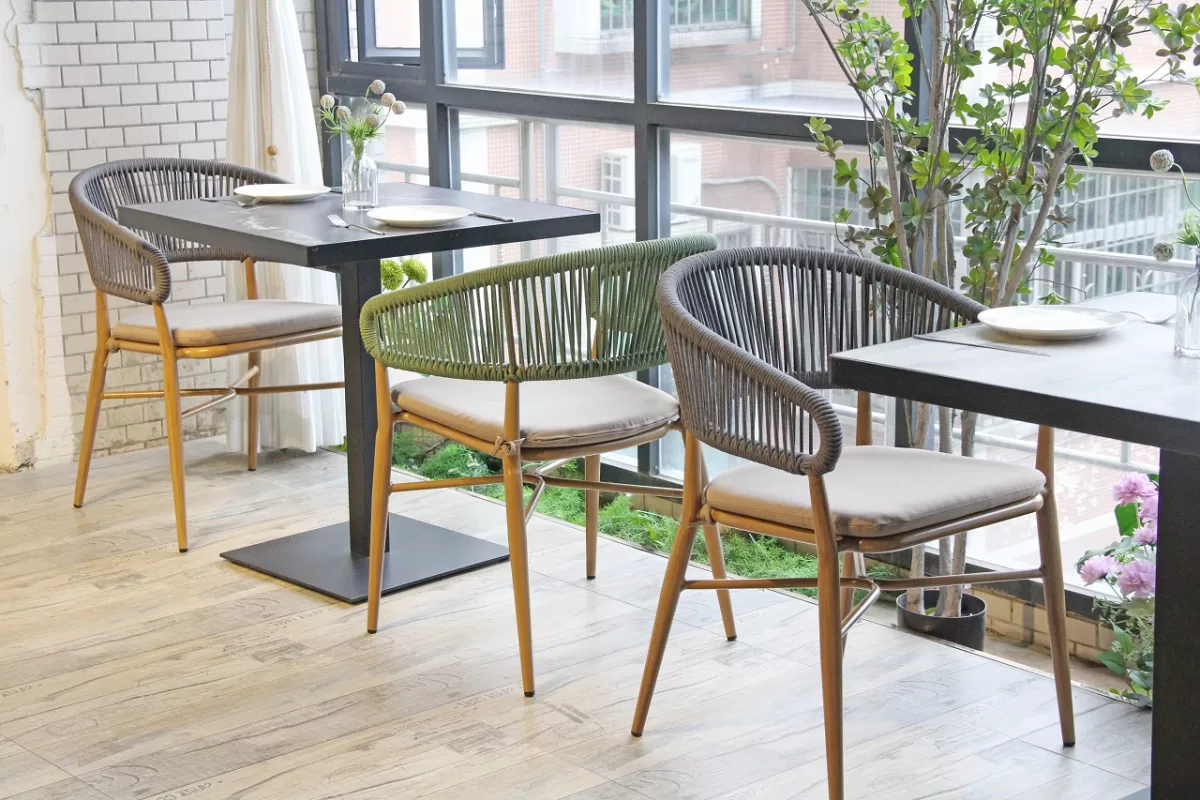
2. Polymer Materials
Advancements in technology have introduced polymer materials like PE (polyethylene) and PVC (polyvinyl chloride) into outdoor furniture, providing effective alternatives to natural materials. The main advantage of these synthetic materials is their superior physical properties and chemical stability. PE rattan, which mimics the look and feel of natural rattan, boasts excellent waterproofing, UV resistance, and durability, making it ideal for outdoor conditions. While PVC wicker also offers good waterproof and wear-resistant qualities, it generally lacks the same flexibility and realism as PE.
The rise of polymer materials addresses many issues associated with natural options, such as susceptibility to damage and decay. Additionally, these materials allow for more controlled and customizable production processes, catering to diverse market needs. With a wide range of colors available, designers can create everything from natural wood tones to vibrant hues, enhancing the aesthetic appeal of outdoor furniture.
3. Synthetic Fiber Materials
Synthetic fibers such as nylon, polypropylene, PET, and polyester are becoming increasingly significant in outdoor furniture design. These materials are known for their high strength, low water absorption, and excellent durability. For instance, polypropylene fiber is ideal for weaving cushions and upholstery due to its tensile strength and resistance to wear. Meanwhile, nylon fiber adds comfort and elasticity to outdoor pieces.
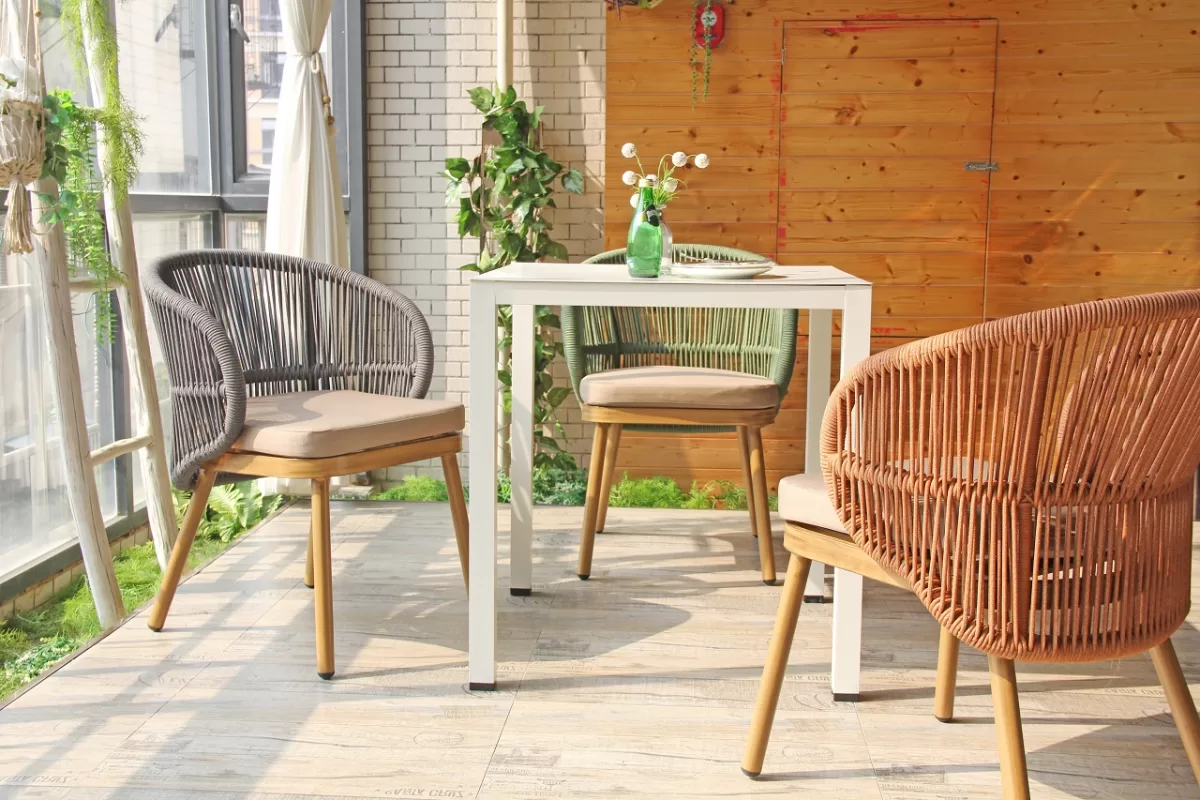
Another notable benefit of synthetic fibers is their recyclability. In an era focused on sustainability, using recyclable materials not only helps reduce environmental impact but can also lower production costs and enhance economic efficiency. Furthermore, by treating these fibers with additives like antibacterial agents and flame retardants, outdoor furniture made from synthetic materials can gain additional functionalities, broadening their usability in various settings.
PE and PVC-Based Imitation Rattan and Wicker
In the quest to harmonize nature with modern living, outdoor furniture has experienced a material revolution. Traditional natural rattan and wicker are increasingly being replaced by PE (polyethylene) rattan and PVC (polyvinyl chloride) wicker, which have become favorites in contemporary outdoor furniture design due to their unique advantages.
1. A New Era in Outdoor Furniture
The introduction of PE rattan and PVC wicker marks a significant shift in outdoor furniture. These materials effectively mimic the look and feel of natural rattan and wicker while overcoming the limitations of their natural counterparts. With a vibrant array of colors and forms, they seamlessly integrate into various outdoor decor styles—from sleek and modern to tropical—showcasing high aesthetic appeal. More importantly, their durability far exceeds that of natural materials, allowing them to withstand harsh weather conditions, including intense sunlight, rain, and daily wear and tear, ensuring longevity.
2. Comfort and Usability Year-Round
One notable feature of PE rattan and PVC wicker is their poor thermal conductivity, which helps maintain a comfortable temperature. In hot summers, they remain cool to the touch, while in colder months, they offer relative warmth. This characteristic enhances user comfort, making them ideal for year-round use. Additionally, their lightweight nature allows for easy movement, making outdoor gatherings and leisure time more enjoyable.
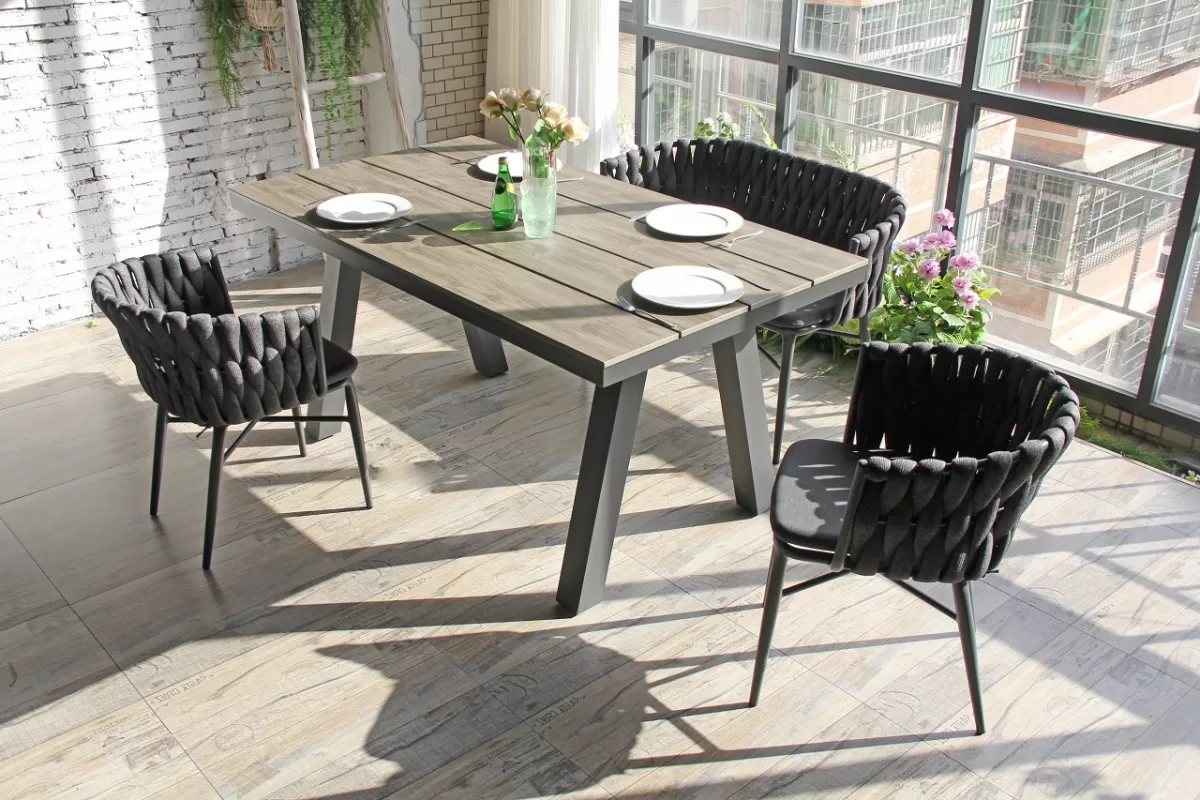
3. Versatility in Design
From stylish outdoor sofas to practical lounge chairs, elegant dining tables to rocking chairs, the versatility of PE rattan and PVC wicker is impressive. Designers leverage the flexibility of these materials to create furniture that is both functional and aesthetically pleasing, meeting the needs of modern families for personalized outdoor spaces. These materials are not only popular in private gardens but are also widely used in public leisure areas such as restaurants, cafes, hotels, and resorts, playing a crucial role in creating a relaxed atmosphere.
4. Addressing the Challenges
Despite their many benefits, PE rattan and PVC wicker are not without flaws. Prolonged exposure to sunlight and humid conditions can lead to material aging, loosening, and even breakage. Physical impacts or improper use may cause surface damage, affecting both appearance and longevity. Deformation is another concern, as fluctuations in humidity can cause furniture to expand or contract, potentially compromising its stability.
5. Innovations for the Future
To address these challenges, manufacturers are continually developing new technologies. Innovations include enhancing material formulations for better weather resistance and toughness, employing advanced surface treatments to prevent fading and cracking, and improving structural support designs to minimize deformation risks. Furthermore, increasing environmental awareness has prompted the industry to explore recyclable materials to reduce ecological impact. With ongoing technological advancements, the future of outdoor furniture promises to be more diverse and of higher quality than ever before.
The Latest Weaving Material for Outdoor Furniture: Polyester Rope
In the rapidly evolving outdoor furniture market, the exploration of new materials drives innovation. Recently, polyester rope has emerged as a game changer, capturing the attention of designers and consumers alike. This woven material, crafted from robust polyester fibers, not only enhances outdoor furniture design but also sets new standards for outdoor leisure with its exceptional practical performance.
1. Strength and Stability
The core strength of polyester rope lies in its extraordinary mechanical properties. Its molecular structure provides much higher tensile strength and load-bearing capacity than traditional materials, allowing it to maintain shape and resist deformation under heavy loads. This durability is particularly crucial for large outdoor furniture like lounge chairs and swings, ensuring safety and comfort for users over years of use.
2. Weather Resistance
Outdoor environments pose significant challenges for furniture materials. Polyester rope excels in weather resistance, effortlessly handling extremes such as intense sunlight, rain, and saltwater exposure. This resilience means that furniture made from polyester rope requires less frequent replacement, reducing maintenance costs and enhancing user convenience. Its resistance to acidic and alkaline conditions also makes it suitable for areas near chemical parks or polluted sites, demonstrating impressive adaptability.
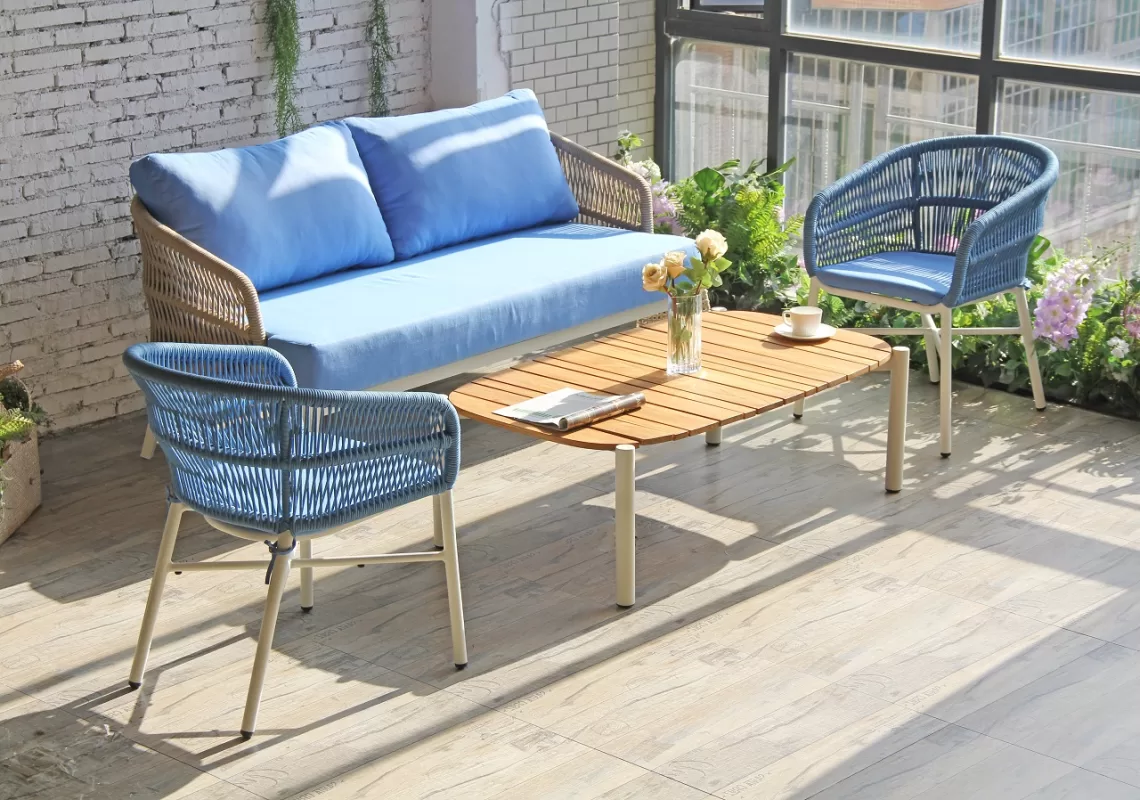
3. Longevity and Environmental Benefits
Polyester rope is notable for its anti-aging properties and durability. Its chemical stability prevents oxidation, allowing it to retain its original color and strength even under harsh UV conditions. As a result, outdoor furniture made with polyester rope can last 3 to 5 years or longer, offering significant resource savings and waste reduction for environmentally conscious consumers. This longevity aligns with the principles of low-carbon living.
4. Comfort and Aesthetics
Beyond its functional advantages, polyester rope also excels in comfort. The softness of the fibers creates a smooth surface that is gentle against the skin, posing no risk of roughness or allergies, making it safe for everyone, including children and the elderly. Additionally, its breathable nature ensures good air circulation, preventing discomfort even in hot weather, thus achieving an ideal balance of function and aesthetics.
5. A New Era in Outdoor Furniture Design
The rise of polyester rope heralds a new era in outdoor furniture design. Ongoing research into polyester fiber modification promises further advancements in strength, weather resistance, and eco-friendliness, paving the way for innovative outdoor furniture solutions. Designers are poised to explore the full potential of polyester rope, integrating modern aesthetics to create unique, personalized pieces that cater to diverse consumer needs. This emerging material is steering the outdoor furniture industry toward a more diverse and upscale future, beautifully blending weaving art with natural landscapes.
RECENT POSTS
- Must See For Restaurant Operators: How To Purchase High-Quality Restaurant Furniture At Low Cost?
- Analysis Of Color Selection Trends For Outdoor Furniture In 2025
- Design Leads The Future| CDG Furniture Perfectly Ends The 55th CIFF
- What Kind Of Bar Chair Is Suitable For An Open Bar?
- Woven Rope Chairs: Diverse Choice From Home To Commercial Space
- Which Type Of Outdoor Furniture Is More Popular In European Countries?
- Industrial Style Outdoor Furniture Modern, Simple, And Durable
- Customization And Selection Of Furniture For Themed Restaurants
- Why Aluminum Garden Furniture is the Best Choice for Outdoor Living ?
- Woven Rope Patio Furniture Set: Perfect for Every Occasion







